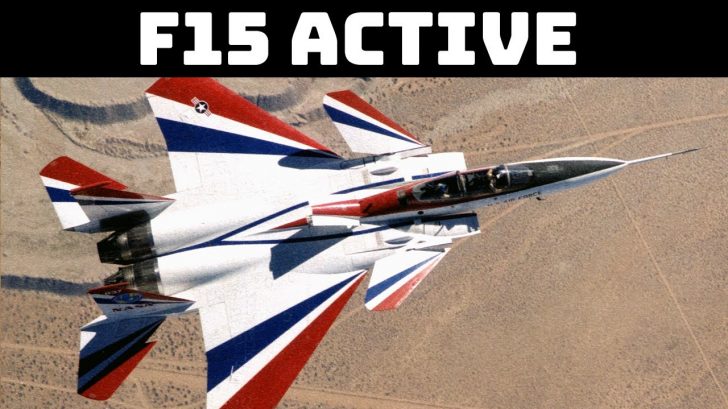This F-15 had perhaps the most diverse range of duties of any F-15 ever built. It rolled out the shop in 1973 as the first two-seat variant of the Eagle and the sixth-ever F-15 built by McDonnell Douglas. The aircraft would later serve as a trainer, a test bed for the F-15E Strike Eagle, and even as a NASA research aircraft for several programs. Here is the story of Aircraft 837:
STOL/MTD (Short Takeoff and Landing/Maneuver Technology Demonstrator) Program
The F-15 (Serial Number 71-0290) was fitted with 2D nozzles and canards and was flown as a proof of concept for Langley Research Center’s 2D thrust vectoring nuzzles. This new addition primarily improved low-speed performance and tested ways to land and take off from wet or bomb-damaged runways.
During the program, the F-15 had a 25% reduction in takeoff roll, was able to land on just 1,650 ft of runway (from 7,500 ft!), and could use thrust reversal in flight to rapidly decelerate.
Test Bed For F-15E
The Strike Eagle was McDonnel Douglas’ submission to the Enhanced Tactical Fighter Program, rivaling the F-16 XL. As part of the program, the aircraft was given a distinct red, white, and blue paint scheme in 1988, making it one of the most recognizable aircraft to take the skies.
Under NASA
After the culmination of the STOL/MTD program, NASA quickly poached the aircraft in 1993. As a full-time research vehicle, the aircraft was given the classification of “NF-15B”.
NASA replaced its original powerplant with Pratt & Whitney F100-229 engines with Pitch/Yaw vectoring nuzzles. The new nozzles allowed the exhaust to be rotated 20 degrees in any direction while adding minimal weight.
With this configuration, Aircraft 837 served in the Advanced Control Technology for Integrated Vehicles or ACTIVE Program.
ACTIVE Program
The program investigated pitch/yaw balance beam nozzles along with advanced control logic programming. Shortly after it entered the program, the F-15 was able to achieve the first supersonic yaw vectoring flight in 1996.
On later flights, yaw vectoring was obtained at an angle of attack as high as 30 degrees. Additionally, the successful development and testing of an Adaptive Performance Software Program allowed the aircraft to automatically calculate the best settings for the thrust vectoring nozzles and control surfaces to minimize drag.
Because of this, the 837 was able to gain another Mach 0.1 with no increase in engine power at 30,000 ft.
Its specifications during the ACTIVE program are as follows:
- Length: 63.8 ft
- Wingspan: 42.10 ft
- Canard span: 25.7 ft
- Horizontal tail span: 28.3 ft
- Max speed: Mach 2 or 1,522 mph
- Service Ceiling: 60,000 ft
Retirement
Subsequent test data from Aircraft 837 was used to improve the F-15E’s performance on ground-attack missions. In addition, the aircraft would later be utilized in the F-15 Intelligent Flight Control System program, Space-Based Range Demonstration and Certification project, High Stability Engine Control program, and the High-Speed Research Acoustics program.
Aircraft 837 was officially retired on January 30, 2009, and now sits on static display at Edwards Air Force Base.



